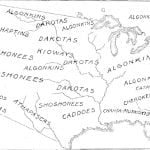The lists following are as they have been agreed upon by most American ethnologists. Data as to separate tribes and the location and number of the tribes and stock are also given.
The stock table given shows some 280 tribes or parts or Indian tribes in the United Sates. Many of these, notably those in Oregon, are merged into others, and some names are undoubtedly local duplications. Many of the tribes are widely scattered; for instance, the Arapaho are at Shoshone agency, Wyoming, and at Cheyenne and Arapaho agency, Oklahoma. Some Apaches are at the Kiowa, Comanche, and Wichita agency, Oklahoma; some at the Jicarilla Apache reservation and Mescalero Apache agency, New Mexico, others at the several agencies in Arizona, Geronimo’s band of Apaches are at Mount Vernon barracks, near Mobile, Alabama, deported from Arizona. The Oneidas, are in New York and Wisconsin, and the Cherokees in North Carolina and Indian, territory. Some of these tribes were removed and placed wide apart for war or other reasons. Others were, monadic before they were located on reservations, and were placed on reservations adjacent to where they were found. Some Indians are also noted who are not on reservations or at agencies, The large map of the Unite States in1890, showing agencies, will aid in locating the tribes.
Of the 53 known stocks or families of Indians defined by scientists as being or having been within the area of the present United States, 32, or portions of them, are now in existence; but some of them as given are in numbers, and a doubt may exist as to their being original stocks.
There are now very few if any Indians of the Kulanapan stock given as at Potter valley (no reservation) and Round Valley reservation, California and Russian River (no reservation), Oregon, The Palaihaihan stock, Pitt Rivet tribe, Rotund Valley reservation, California, consists of a number of small tribes of California Indians numbering in all only 581, The Pitt River tribe is the only tribe of this stock given as being on the Round Valley reservation, and the only tribe noted as of this stock. Much difficulty would be experienced in singling out, Pitt River Palaihaihn stock Indian, as the tribes are merged. The Tonkawan stock consists of 57 persons all told, the remnants of the Tonkawa tribe of Texas, now at Oakland reservation, Ponca, Pawnee, and Otoe agency, Oklahoma.
Albert Gallatin, in his paper all “A Synopsis of the Indian Tribes in 1836”, gave but 28 stocks or families of North American Indians, and some of them he probably considered questionable or remote, as his map gave location for but 11 of these stocks; still it will be remembered that the extreme west of the United States was not well known in 1836, and that Arizona, California, and New Mexico were not then portions of the Unite States.
The following two tables are derived from the Seventh Report of the Bureau of Ethnology, 1885-1886, J. W. Powell, director, being responsible for the classification:
Stocks In The United States which have Become Extinct
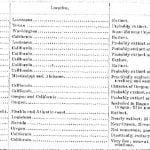
The 32 stocks in the United States now having tribal relations are as follows:
Indian Families or Stocks in the United States
| Algonkian (Algonquian) | Kiowan | Pani (Caddoan) | Tnkawan |
| Athapascan | Kitunahan | Piman | Uchean |
| Caddoan | Kulanapan | Pujuman | Waitlatpaman |
| Chinookan | Kusan | Salishan | Wakashan |
| Copehan | Lutamian | Shahaptian | Yakoman |
| Iroquoian | Mariposan | Shoshonean | Yukian |
| Kalapooian | Muskhogean | Siouan | Youman |
| Kersan | Palaihnihan | Tewan | Zunian |
A discussion of the Indian Linguistic Families of America North of Mexico, by J. W. Powell will be found in the Seventh Annual Report of the Bureau of Ethnology, 1885-1886.
Names Of Indian Tribes In The United States
From their discovery by the whites the several Indian tribes have been variously named; none, however, at this date have for current names their Indian names. They are known by the names given them by Europeans as a rule, and sometimes by other tribes, and by localities and tribal peculiarities or incidents, such as the Nez Percé (pierced noses), and the Winnebagos, called Les Puans (the stinkers), because of the large quantities of decaying fish aid in their camps. This variety of names has resulted in confusion and increased error in identifying tribes.
Principal Tribes Known To The Laws Of The United States
The following table gives the names of the principal tribes as known to the laws of the United States and the names of a number of the same tribes as given in the stock table on the following pages:

Table Of Stocks
The following tables, corrected by Prof. Otis T. Mason, showing the tribes (about 280 in number), stocks, reservations, and agencies of Indians in the United States, does not include those in Alaska:
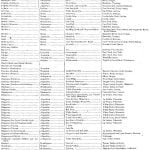
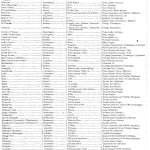
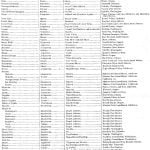


Location of Stocks of the American Race within the Present United States at the time of arrival of Europeans
